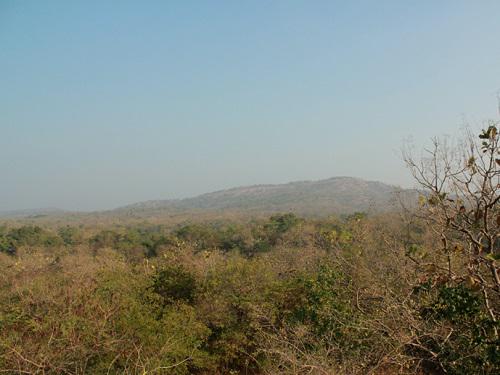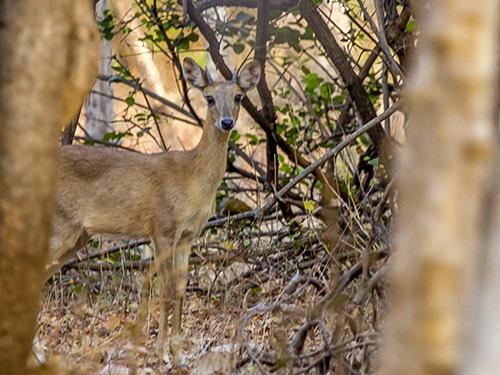Dhawal Mehta
The proposed project aims at understanding the abundance, distribution and imminent conservation issues of the Four-Horned Antelope in Gir Protected Area.

Gir landscape. ©Dhawal Mehta.
The four-horned antelope (Tetracerus quadricornis) is endemic to the Indian sub-continent. The IUCN Red List has designated the species as Vulnerable and recommends the need for detailed scientific investigation to fill current gaps in understanding species distribution, ecology and biology. Very few studies have addressed the biology and ecology of this antelope and that too in selected pockets in India and Nepal. Few studies that have addressed the biology and ecology of the four horned antelope include those from Gir, Mudumalai, Panna, and Bandipur in India and Chitwan in Nepal. Gir forms the western most part of the distribution range of the species. The last work reported from Gir was conducted by Berwick in 1974. No other study on the species has been undertaken ever since. Some works in the past decades have looked at estimating the abundance of the species as part of Asiatic lion and leopard prey population estimation exercises.

Four Horned Antelope. ©Dhawal Mehta.
The proposed work aims to estimate the current abundance to understand the trend in the population of the species and also to understand the factors that govern distribution and occupancy of the species in Gir Protected Area. In addition, the project aims to identify the threats for conservation of the species and subsequently generate awareness among different stakeholders and inculcate public participation for the long term conservation of the species.